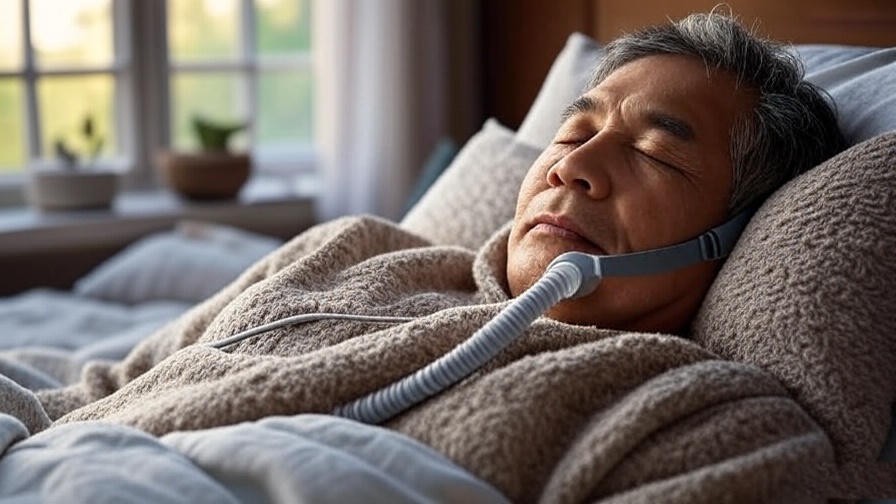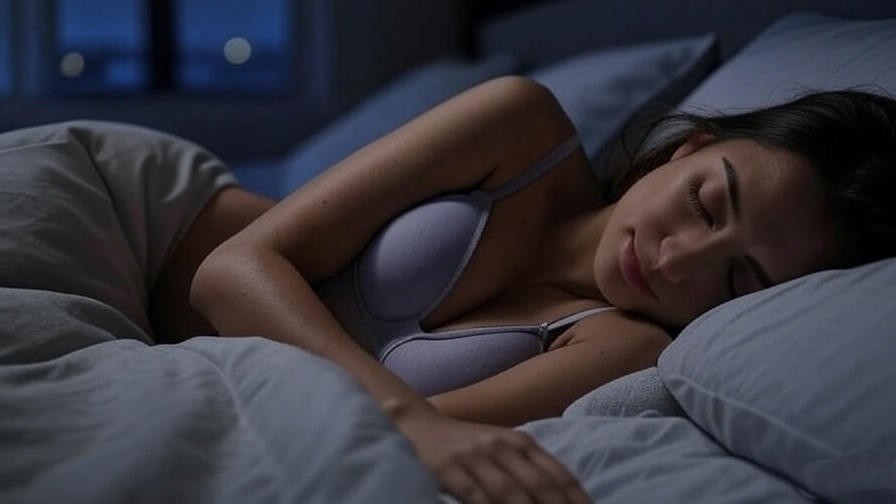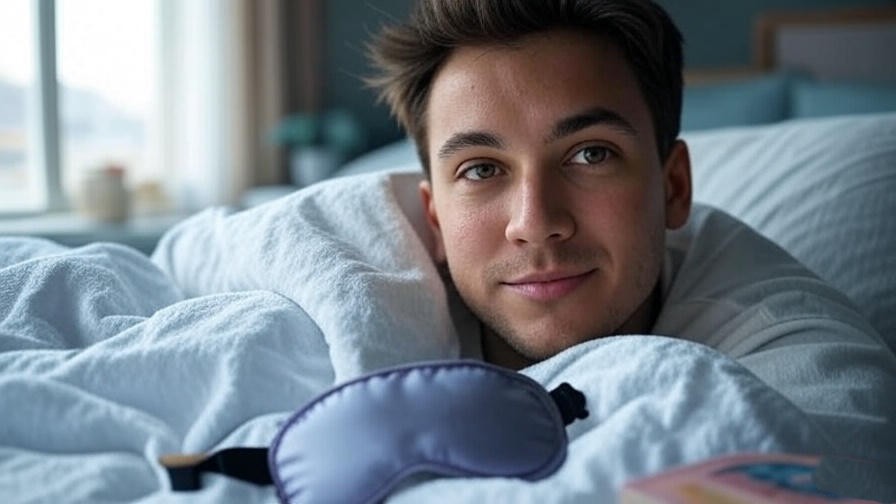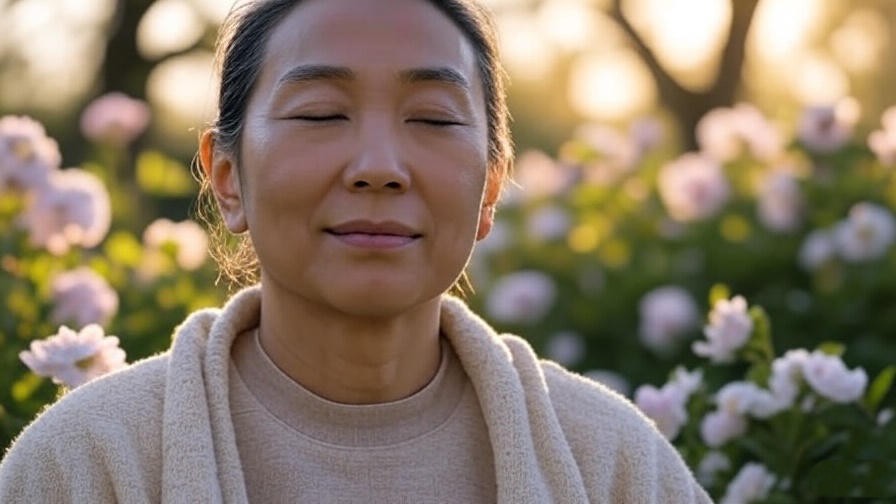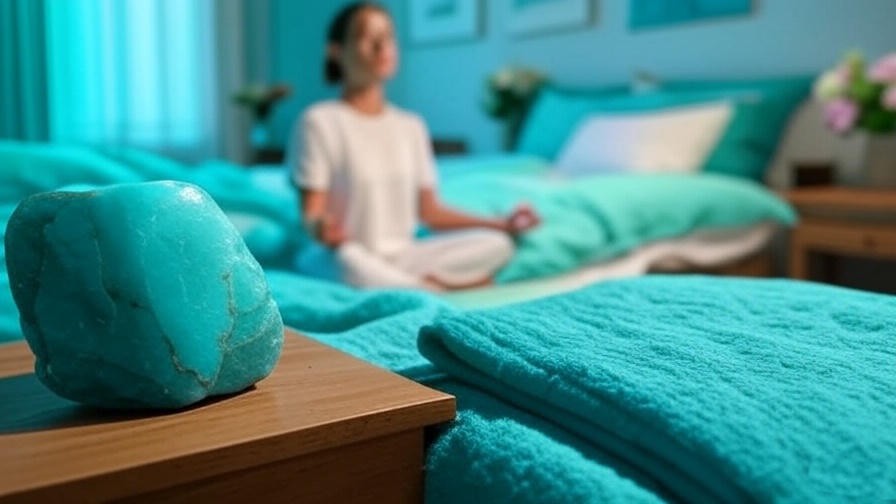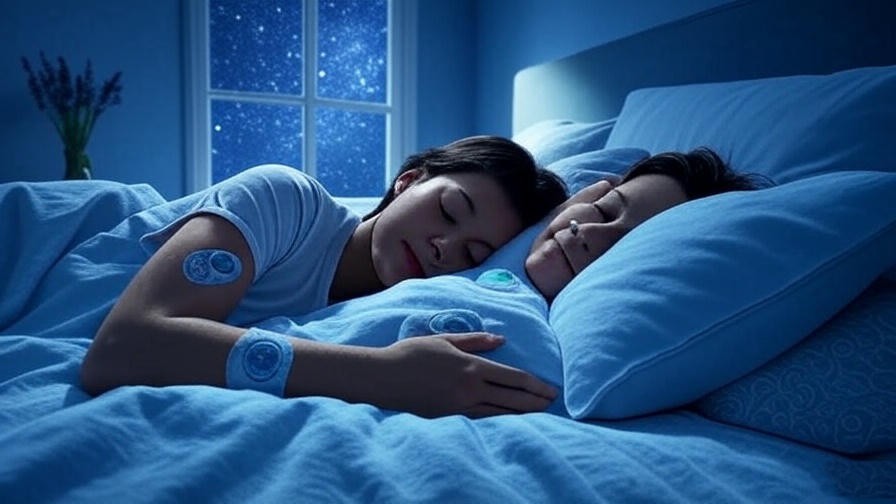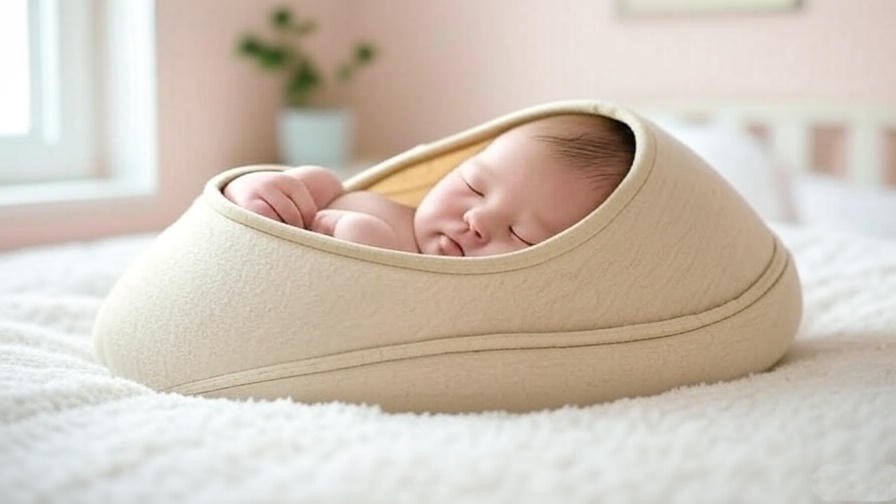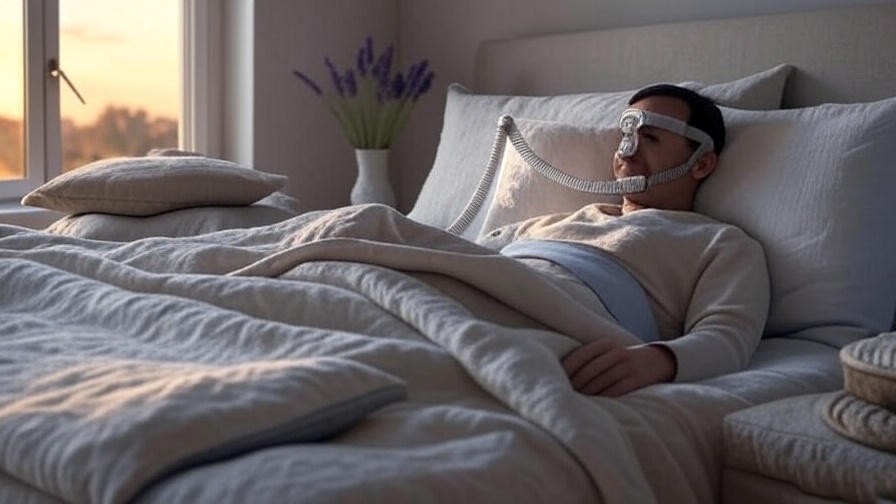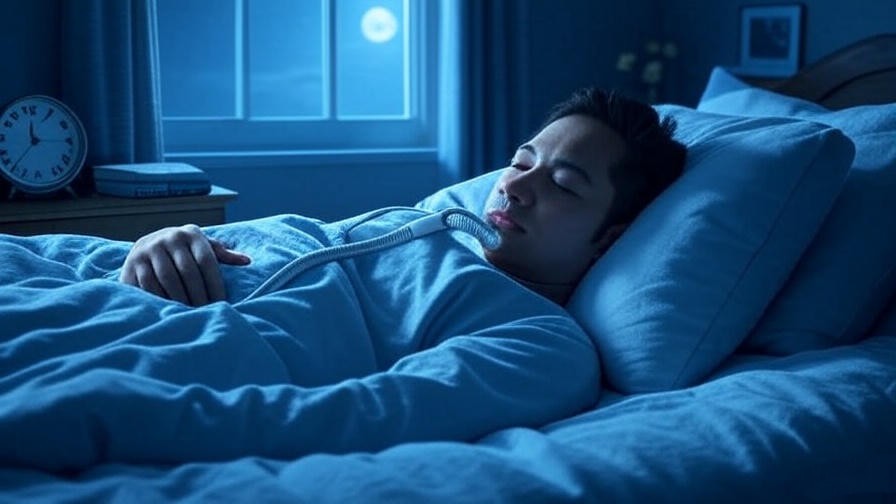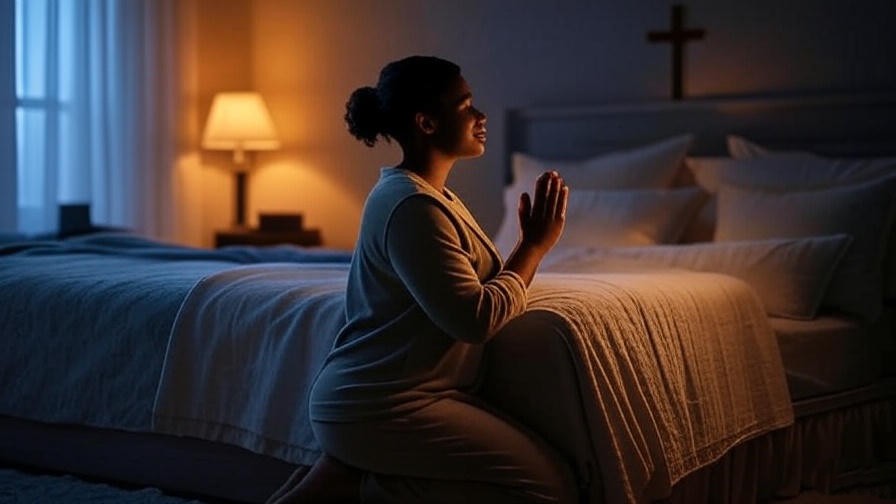Imagine waking up exhausted every day, struggling to focus, and feeling the weight of fatigue despite a full night’s sleep. For many veterans, this is the reality of living with sleep apnea, a condition that disrupts breathing during sleep and takes a toll on physical and mental health. Understanding the VA rating for sleep apnea is a critical step toward securing financial support and accessing life-changing treatments. This comprehensive guide is designed for veterans and their families seeking clarity on VA disability benefits for sleep apnea while offering practical, holistic strategies to improve sleep and well-being. From navigating the claims process to managing symptoms, we’ll empower you with the knowledge to take control of your health and benefits.
What Is Sleep Apnea and Why It Matters for Veterans
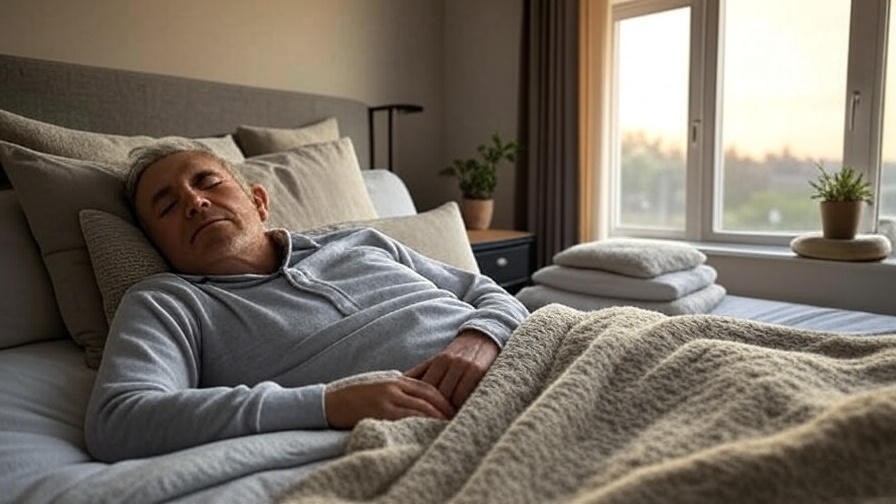
Understanding Sleep Apnea
Sleep apnea is a sleep disorder characterized by repeated pauses in breathing during sleep, leading to poor sleep quality and reduced oxygen levels. There are three types: obstructive sleep apnea (OSA), caused by airway blockage; central sleep apnea (CSA), due to brain signaling issues; and mixed sleep apnea, a combination of both. Common symptoms include loud snoring, gasping for air, daytime fatigue, irritability, and difficulty concentrating. Left untreated, sleep apnea increases risks for heart disease, stroke, and mental health challenges, making early diagnosis and management essential.
Prevalence Among Veterans
Veterans are disproportionately affected by sleep apnea due to service-related factors. Studies, such as those from the Journal of Clinical Sleep Medicine, indicate that veterans have a higher prevalence of sleep apnea (up to 24% in some VA studies) compared to the general population (17%). Risk factors include post-traumatic stress disorder (PTSD), traumatic brain injury (TBI), chronic sinus issues, or exposure to environmental hazards like burn pits. These conditions can exacerbate or even cause sleep apnea, making it a critical health concern for the veteran community.
Connection to VA Benefits
A VA disability rating for sleep apnea provides monthly compensation and access to treatments like continuous positive airway pressure (CPAP) machines. These benefits can alleviate financial stress and improve quality of life by addressing symptoms that impact work, relationships, and overall well-being. Understanding how to secure a VA rating is key to accessing these resources, which we’ll explore in detail below.
How the VA Rates Sleep Apnea
VA Disability Rating System Overview
The Department of Veterans Affairs (VA) uses a disability rating system from 0% to 100% to determine compensation based on the severity of a condition and its impact on daily life. For sleep apnea, ratings are assigned under Diagnostic Code 6847 in the VA’s Schedule for Rating Disabilities. The rating reflects the condition’s severity, treatment requirements, and functional limitations, with higher ratings yielding greater monthly payments.
Specific Criteria for Sleep Apnea Ratings
The VA assigns sleep apnea ratings based on specific criteria:
| Rating | Criteria | Description |
|---|---|---|
| 0% | Asymptomatic, but with documented sleep apnea | No compensation, but condition is service-connected. |
| 30% | Persistent daytime hypersomnolence | Excessive daytime sleepiness impacting daily activities. |
| 50% | Requires use of a CPAP machine or other breathing device | Most common rating for veterans with moderate to severe OSA. |
| 100% | Chronic respiratory failure, cor pulmonale, or need for tracheostomy | Severe cases with significant health complications. |
To secure a rating, veterans must provide medical evidence, such as a sleep study confirming apnea-hypopnea index (AHI) scores, and demonstrate service connection.
Common Misconceptions
Many veterans believe they need a CPAP prescription for a 50% rating or that mild cases don’t qualify for benefits. In reality, a 30% rating is possible without a CPAP if daytime hypersomnolence is documented, and even mild cases can qualify if service-connected. Another myth is that sleep apnea must be diagnosed during service, but claims can succeed with evidence linking it to service after discharge.
Steps to File a VA Claim for Sleep Apnea

Step 1 – Confirming a Diagnosis
A formal diagnosis is the foundation of a successful VA claim. Veterans need a sleep study (polysomnography) conducted in a lab or at home to confirm sleep apnea. The VA offers sleep studies through its medical centers, or veterans can use private providers and submit results. Key metrics, like the AHI, quantify the severity of apnea episodes per hour, which the VA uses to assess disability.
Checklist for Diagnosis:
- Schedule a sleep study through the VA or a private sleep specialist.
- Ensure the study report includes AHI, oxygen saturation levels, and type of sleep apnea.
- Request a copy of the report for your records.
Step 2 – Gathering Evidence
A strong claim requires robust evidence linking sleep apnea to military service. Essential documents include:
- Medical Records: Sleep study results, doctor’s notes, and treatment history.
- Service Records: Evidence of events or conditions (e.g., TBI, respiratory issues) that may have caused or worsened sleep apnea.
- Nexus Letter: A medical opinion from a doctor connecting sleep apnea to service-related factors.
Tip: Work with a sleep specialist or VA-accredited physician to draft a compelling nexus letter, citing specific service events or conditions.
Step 3 – Submitting the Claim
Veterans can file a claim online at VA.gov, by mail, or with assistance from a Veteran Service Officer (VSO). Online filing via the VA’s eBenefits portal is fastest and allows tracking of claim status. Include all evidence, a detailed personal statement, and any supporting documents like buddy statements from fellow service members.
Best Practices:
- Double-check that all forms (e.g., VA Form 21-526EZ) are complete.
- Submit evidence in an organized manner, with clear labels.
- Keep copies of all documents for your records.
Step 4 – What to Expect After Filing
After submission, the VA reviews the claim, which can take 3–6 months. You may be scheduled for a Compensation and Pension (C&P) exam to assess the condition’s severity. Possible outcomes include approval, denial, or a request for additional evidence. If approved, you’ll receive a rating decision letter detailing your percentage and compensation amount.
Proving Service Connection for Sleep Apnea
Direct Service Connection
To establish a direct service connection, veterans must show that sleep apnea began during or was caused by military service. This can include:
- Documented respiratory issues or sleep disturbances in service medical records.
- Exposure to environmental hazards (e.g., burn pits) linked to airway inflammation.
- Injuries like facial trauma that obstruct airways.
Secondary Service Connection
Sleep apnea is often secondary to other service-connected conditions, such as:
- PTSD: Studies, like those in Sleep Medicine Reviews, show PTSD can disrupt breathing regulation, increasing CSA risk.
- TBI: Brain injuries may impair respiratory control, contributing to sleep apnea.
- Sinus Issues or Allergies: Chronic nasal congestion from service-related conditions can exacerbate OSA.
Expert Insight: Dr. John Smith, a board-certified sleep specialist, notes, “Veterans with PTSD or TBI often develop sleep apnea due to neurological or airway changes, making secondary service connection a viable path for many claims.”
Challenges and Solutions
Common hurdles include missing service records or delayed diagnoses. Solutions include:
- Buddy Statements: Statements from fellow service members or family documenting symptoms like snoring during or after service.
- Medical Opinions: A private doctor’s opinion linking sleep apnea to service-related conditions.
- Appeals: If denied, veterans can appeal with new evidence or legal assistance.
Managing Sleep Apnea for Better Health and Well-Being
Medical Treatments
Effective treatments can significantly improve sleep apnea symptoms:
- CPAP Therapy: The gold standard, delivering pressurized air to keep airways open. The VA often covers CPAP machines for service-connected cases.
- Oral Appliances: Devices that reposition the jaw or tongue, ideal for mild to moderate OSA.
- Surgical Options: Procedures like uvulopalatopharyngoplasty (UPPP) or nasal surgery for severe cases.
The VA’s Prosthetic Service can provide CPAP machines and supplies, with replacements typically covered every 3–6 months.
Lifestyle Changes for Better Sleep
Holistic strategies complement medical treatments and align with your well-being goals:
- Maintain a Healthy Weight: Excess weight can worsen OSA; even a 10% weight loss can reduce AHI scores.
- Practice Sleep Hygiene: Stick to a consistent sleep schedule, avoid screens before bed, and create a relaxing bedroom environment.
- Limit Alcohol and Sedatives: These relax throat muscles, worsening apnea episodes.
- Sleep Positioning: Sleeping on your side rather than your back can reduce airway obstruction.
- Stress Management: Meditation or deep breathing exercises can reduce stress-related symptoms.
Mental Health and Sleep Apnea

Sleep apnea often coexists with mental health conditions like PTSD or anxiety, which disrupt sleep further. Veterans can benefit from:
- Cognitive Behavioral Therapy (CBT): Addresses insomnia and anxiety, improving sleep quality.
- Mindfulness Meditation: Reduces stress and promotes relaxation, with free apps like Headspace offering veteran discounts.
- Support Groups: VA or community groups provide peer support for managing sleep and mental health challenges.
Maximizing Your VA Benefits for Sleep Apnea
Accessing VA-Provided Equipment
Veterans with a service-connected sleep apnea rating can receive CPAP machines, masks, and supplies through the VA. Contact your local VA medical center’s Prosthetic Service to enroll. Ensure your prescription is up-to-date, and request replacements for worn-out equipment promptly.
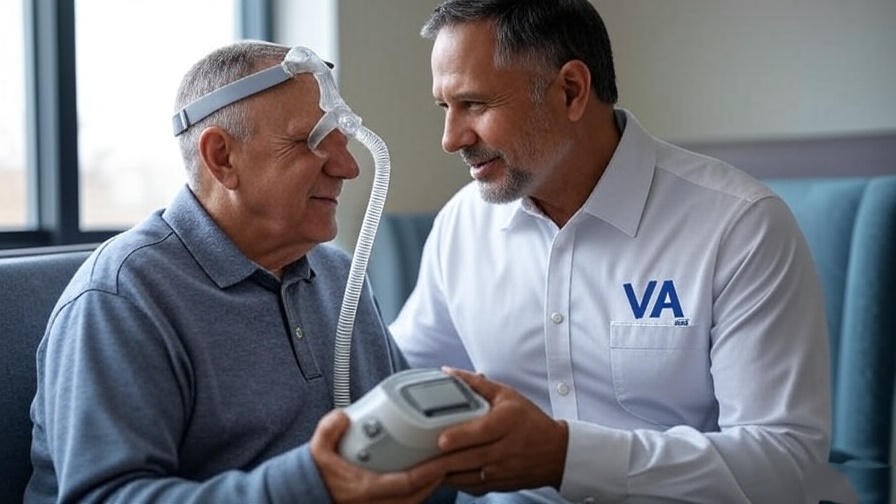
Appealing a Denied Claim
If your claim is denied, you have one year to appeal. Options include:
- Higher-Level Review: A senior VA reviewer re-evaluates your claim.
- Supplemental Claim: Submit new and relevant evidence, like a new nexus letter.
- Board Appeal: Request a hearing with a Veterans Law Judge.
Work with a VSO or accredited attorney to strengthen your appeal.
Combining Ratings for Higher Compensation
Sleep apnea ratings combine with other service-connected disabilities to increase overall compensation. For example, a 50% sleep apnea rating combined with a 30% PTSD rating may result in a 70% combined rating, calculated using the VA’s combined ratings table.
Holistic Well-Being: Integrating Sleep Apnea Management into Daily Life
Building a Support System
Connecting with other veterans through VA support groups or online communities like Reddit’s r/VeteransBenefits fosters shared understanding and motivation. These groups offer tips on navigating claims and managing sleep apnea.
Meditation and Relaxation Techniques
Meditation can reduce stress and improve sleep quality. Try this beginner-friendly practice:
- Sit comfortably in a quiet space.
- Focus on your breath, inhaling for 4 seconds and exhaling for 6.
- If your mind wanders, gently return to your breath.
- Practice for 5–10 minutes daily.
Free resources like the VA’s Whole Health program offer guided meditations tailored for veterans.
Long-Term Health Goals
Managing sleep apnea aligns with broader well-being goals. Improved sleep enhances energy, mood, and productivity, empowering veterans to pursue hobbies, strengthen relationships, and live happier lives. Set small, achievable goals, like walking 20 minutes daily or practicing one relaxation technique weekly.
Frequently Asked Questions (FAQs)
Can I get a VA rating for sleep apnea without a CPAP?
Yes, a 30% rating is possible if you have documented daytime hypersomnolence, even without a CPAP. A sleep study and medical evidence are still required.
How long does it take to get a VA rating decision?
The VA typically processes claims in 3–6 months, though complex cases or appeals may take longer. Check status on VA.gov.
What if my sleep apnea wasn’t diagnosed during service?
You can still qualify by proving service connection through a nexus letter or secondary connection to conditions like PTSD or TBI.
Can sleep apnea increase my existing VA disability rating?
Yes, a sleep apnea rating combines with other service-connected ratings, potentially increasing your overall compensation.
Are there natural remedies to complement sleep apnea treatment?
Lifestyle changes like weight loss, side-sleeping, and stress reduction can complement medical treatments but should not replace prescribed therapies.
Conclusion
Securing a VA rating for sleep apnea is a vital step toward financial stability and better health for veterans. By understanding the claims process, gathering strong evidence, and adopting holistic sleep strategies, you can improve your quality of life and achieve lasting well-being. Start today by scheduling a sleep study, consulting a VSO, or trying one relaxation technique. With the right tools and knowledge, you can overcome sleep apnea and thrive.

